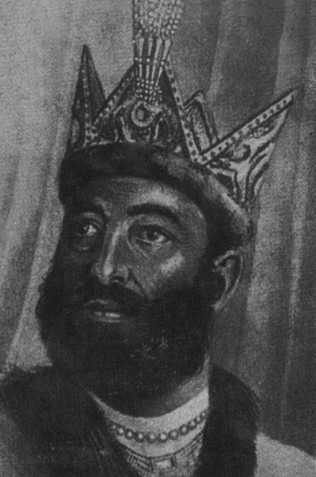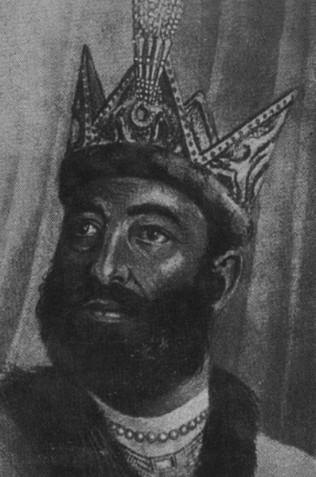The right of these local rulers to rule rested solely upon their personal strength and charisma; seats of power were fair game for anyone strong enough to take them. Taking advantage of this situation, Alptigin, a Turkish slave deposed as Commander-in-Chief of Samanid forces in Khurasan, marched south and estab-lished himself as master of the fort of Ghazni in 962 A.D. Alptigin died soon after taking Ghazni, but his successors, particularly his slave, Sebuktigin (977-997), and Sebuktigin's son, Sultan Mahmud (998-1030), moved out to annex Kabul (977), Bost (977-8), Balkh (994), Herat (1000) and parts of western Persia. Thus established, they then carried the banner of Islam on to India during numerous iconoclastic campaigns from which they returned laden with rich booty. Ghazni, until then an in-significant fort-town, became one of the most brilliant capitals of the Islamic world.
Great mosques and sumptuous palaces, surrounded by carefully rended gardens, rose to be adorned with the gold and gems of India. Here the era's most illustrious poets, artists, architects, philosophers, musicians, historians, arti~ans and craftsmen gathered under the keen patronage of the court. Two thousand five hundred elephants, symbols of the Sultan's immense power and prestige, the backbone of his army, lived in fine stables and "his court was guarded by four thousand Turkish beardless slave-youths, who, on days of public audience, were stationed on the right and left of the throne, two thousand of them with caps ornamented with four feathers, bearing golden maces, on the right hand, and the others, with caps adorned with two feathers, bearing silver maces, on the left." (Juzjani).
The founder of Ghaznavid empire, Mahmud Ghaznavi

In the winter the court moved from chilly Ghazni to the friendly warmth of Bost, as much for the comfort and well-being of their elephants as for their own. The great arch which stands at the foot of the citadel mound at Bost attests to the imposing proportions and lavish decoration expended on the buildings of Bost. North of the fort area the plains are strewn with mounds marking the soldiers' quarters, Lashkar Gah, and the mile long bazaar, Lashkari Bazaar, where the traders who supplied the troops had their shops. On the banks of the Hilmand River at Lashkari Bazaar nobles vied with one another in building pleasure villas. The monumental walls of these villas stretch for miles along the Hilmand today. They stand tall, and from a distance one anticipates the sound of music signalling the start of gay, convivial festivities. On drawing near, however, they prove but empty shells, stripped of their opulent furnishings by mountain men from Ghor, maddened by insult.
The emptiness and ruin is even more apparent at Ghazni, victim of successive onslaughts, where only two minarets and the tomb of the great conqueror Sultan Mahmud still remain. From mounds of rubble at the feet of the minarets, however, Italian archaeologists, under the direction of Umberto Scerrato, have rescued impressive evidence of the splendor and glory that once radiated throughout the world from this great capital city.

Comments